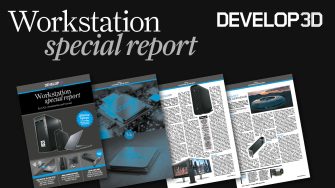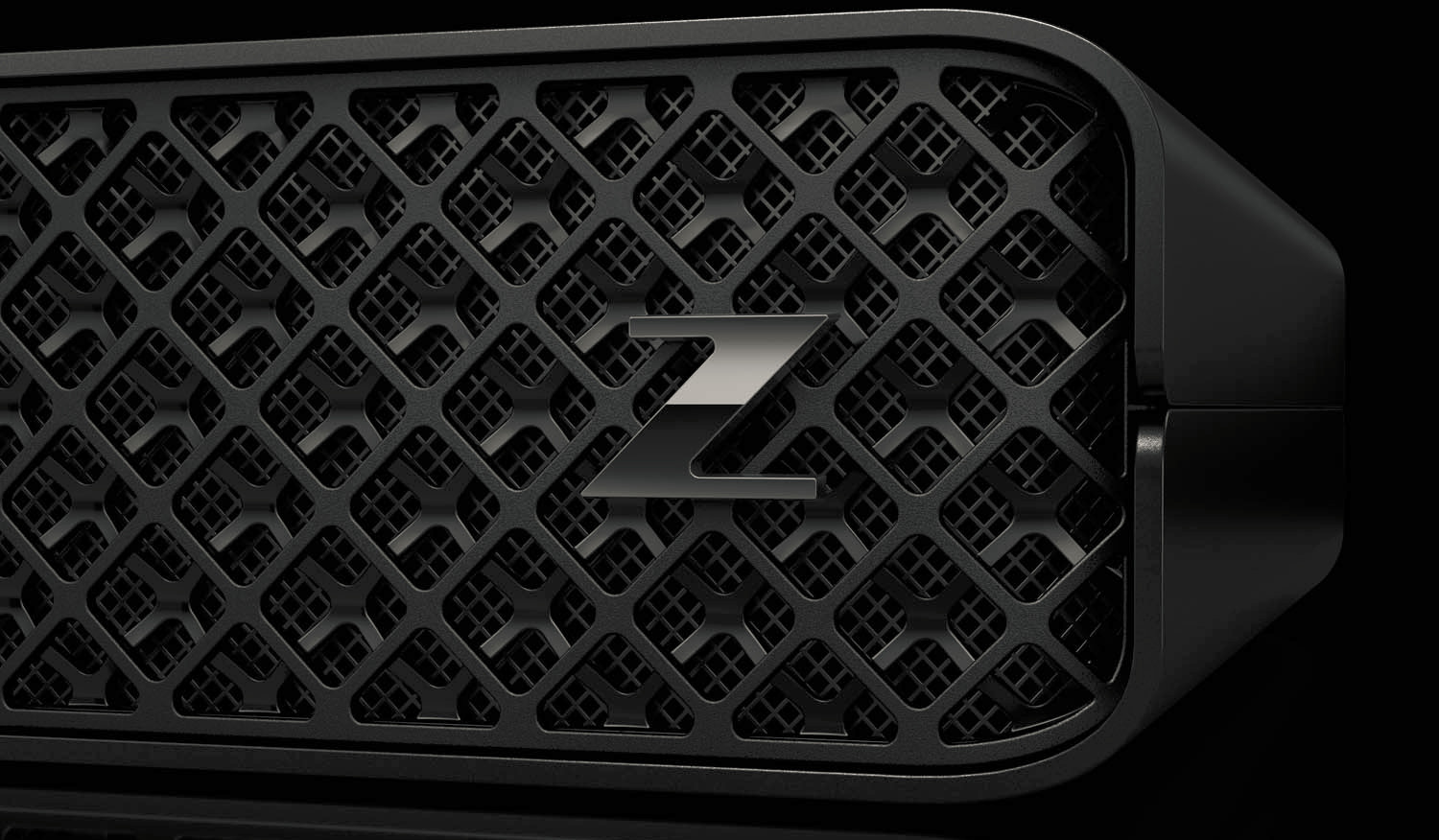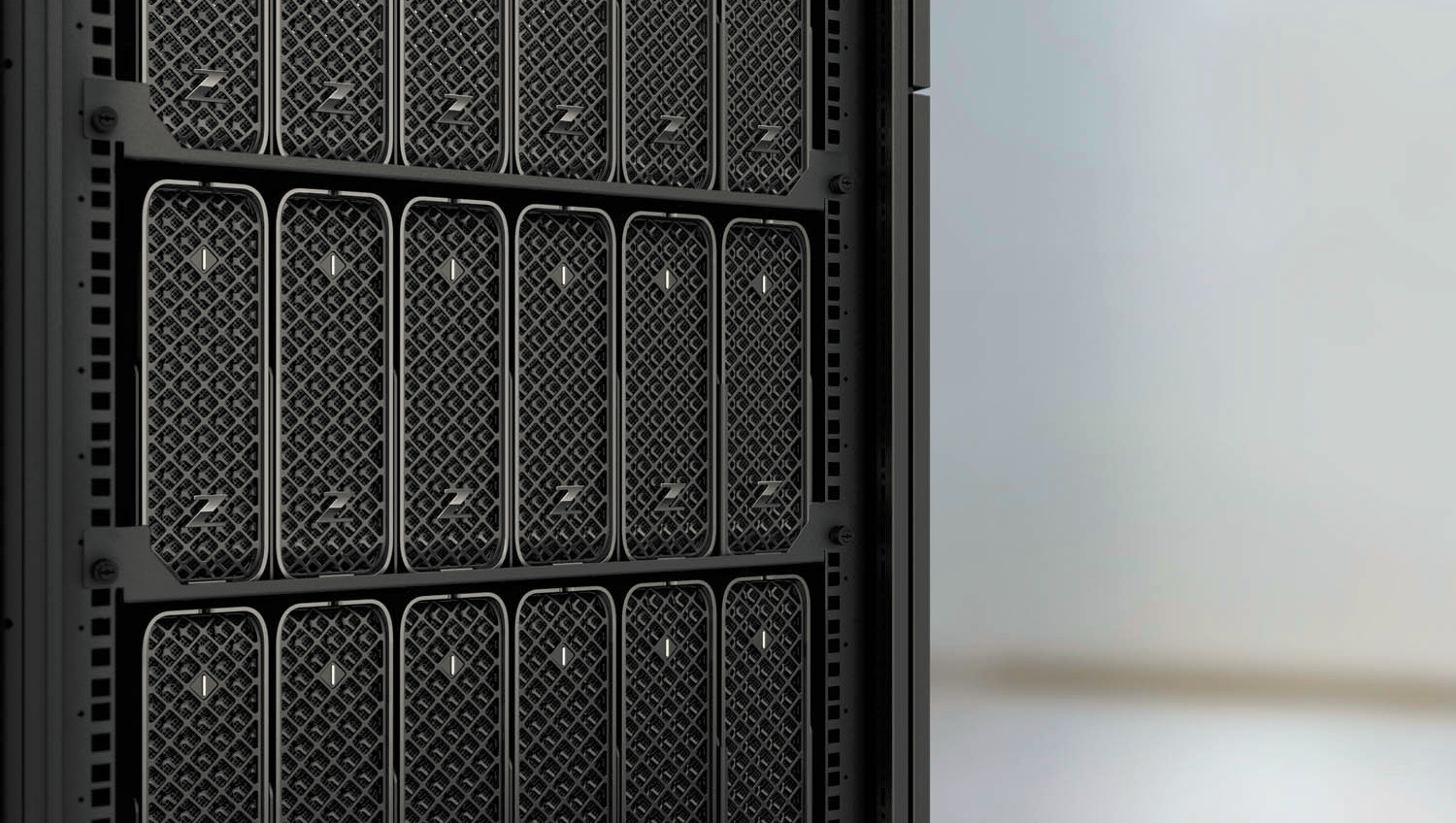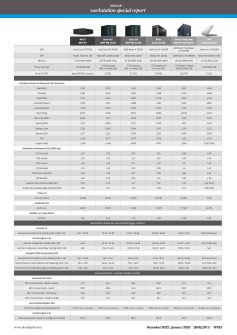HP Z2 Mini G9 – After six years in service, HP has finally redesigned the chassis for its iconic tiny workstation. With better acoustics and significantly enhanced performance, there’s much to like about this diminutive desktop, writes Greg Corke
In late 2016, HP broke the mould with a desktop workstation that was significantly smaller than any other from a major OEM. Since then the HP Z2 Mini has established itself as a firm favourite at DEVELOP3D.
But the original HP Z2 Mini design is now end of life. The G9 edition features a new all-metal chassis. Simple in form, it’s essentially a rectangular prism with rounded corners and a distinctive front mesh, through which air is drawn in, then expelled at the rear.
The beauty of the HP Z2 Mini G9 is its size — a mere 211 x 218 x 69mm. It can sit horizontally or vertically on the desk, kept stable with the included stand. And to keep on brand, the Z logo on the front can be rotated 90 degrees. It can even be VESA mounted under a desk or behind a display and paired with a wireless keyboard and mouse for a clutter free working environment. With integrated Intel Wi- Fi 6E AX211 there’s no need for Ethernet. It’s an ideal machine for space constrained home offices — and there have been plenty of those over the last two years.

It’s 10mm thicker than the previous design, but that means significantly more performance. ‘Alder Lake’ 12th Gen Intel Core CPUs replace ‘Comet Lake’ 10th Gen and, with improved thermal management, the G9 can also support the 125W models, up to the Core i9-12900K. However, it’s important to note that these aren’t the latest ‘Raptor Lake’ 13th Gen Intel Core CPUs, as seen elsewhere in this special report, so are a little slower.
There’s also a wider choice of GPUs, from the entry-level Nvidia T400 (4 GB) right up to the Nvidia RTX A2000 (12 GB) with hardware ray tracing built in. These are standard lowprofile graphics cards, not the custom mobile GPU modules used previously.


Our test unit was well-matched to CAD, with an Intel Core i7- 12700K CPU (3.6 GHz base, 5.0 GHz Turbo, 8 P-cores, 4 E-cores), Nvidia T1000 (4 GB) GPU, 32 GB DDR5- 4800 MHz RAM (2 x 16 GB) and a 1 TB PCIe NVMe M.2 SSD.

In single or lightly threaded workflows, the machine was only around 14-20% slower than the fastest 13th Gen Intel Core desktop. For a machine of this size, that’s impressive.
But in highly multi-threaded workflows like rendering things start to slow down. It not only has fewer E-cores than the top-end Core i9 processors, but due to the smaller chassis the CPU can’t clock as high, particularly under sustained loads. Rendering in Keyshot, for example, it only took 30 seconds for it to drop from 4.10 GHz to 3.48 GHz, although it then maintained that frequency for hours. Notably, there was hardly any fan noise throughout. Considering the thermal challenges of packing standard desktop components into a small chassis, this is quite an achievement, especially as some of the earlier HP Z2 Mini workstations could be quite noisy at times.
The Nvidia T1000 hits the sweet spot for CAD, and the 50W GPU is available in 4 GB and 8 GB models. Our test machine’s 4 GB card performed well in Inventor, Revit and Solidworks, but with some of our larger Solidworks models that need more memory things slowed down, particularly at 4K resolution. Here, the 8 GB card would be a much better fit. An upgrade to the Nvidia RTX A2000 (12 GB) would take the machine into entry-level visualisation territory.
Opening the case takes seconds — simply press the rear release button and slide off the top – but the small chassis does make servicing a bit tricky. To get to the storage, you’ll need to remove the GPU. To get to the memory, unscrew the CPU fan. In our test machine both SODIMM sockets were already taken but there’s a spare M.2 slot for a second SSD. There’s no PSU inside. Instead the HP Z2 Mini comes with a sizeable 280W external power adapter. Speaking of power, it drew a mere 160W at the plug when rendering.
Considering its size, the HP Z2 Mini G9 is well equipped with ports. There are two USB Type C and one USB Type A (charging) on the side, and three USB Type A at the rear, along with 1GbE LAN. A Flex I/O port allows you to add ports of your choosing — from more USB and 2.5GbE LAN to Thunderbolt and HDMi.
The verdict
HP has done an excellent job in updating this impressive micro workstation. The industrial design is excellent, the acoustics are improved, and it’s taken a big step forward in terms of performance. But there are compromises to be made for a machine this small. While the HP Z2 Mini G9 does very well in single threaded and lightly threaded workflows, it falls off the pace with all cores in play. It simply can’t compete with larger towers when it comes to power and cooling. So if your workflows lean that way, there’s a tough choice to make: either maximise performance or minimise the impact on your desk.
Product Specs
HP Z2 Mini G9
■ Intel Core i7-12700K CPU (3.6 GHz base, 5.0 GHz Turbo, 8 P-cores, 4 E-cores, 20 threads)
■ Nvidia T1000 GPU (4 GB)
■ 32 GB DDR5-4800 memory (2 x 16 GB)
■ 1 TB, M.2 PCIe 4.0 NVMe SSD
■ 211 x 218 x 69mm
■ From 2.4 kg
■ Microsoft Windows 11 Pro
■ 3 year (3/3/3) limited warranty includes 3 years of parts, labour and on-site repair
■ Exact price as reviewed not available, but with Intel Core i7-12700 and Nvidia T1000 (8 GB) £1,499 (Ex VAT)
■ www.hp.com/zworkstations
This article is part of DEVELOP3D’s Workstation Special Report
Scroll down to read and subscribe here.
Featuring
- Review: 13th Gen Intel Core vs AMD Ryzen 7000 CPUs
- Exclusive Review: Intel Arc Pro A40/A50 GPUs
- Comment: Workstation energy efficiency
- Review: Scan desktop workstations
- Review: Boxx Apexx S4.04 workstation
- Review: Armari Magnetar M64TP-RW1300G3
- Review: Dell Precision 5470 mobile workstation
- Round-up: Ultra-portable mobile workstations
- Review: Nvidia RTX A2000 / Nvidia T1000 GPUs
- Review: AMD Radeon Pro OpenGL driver






